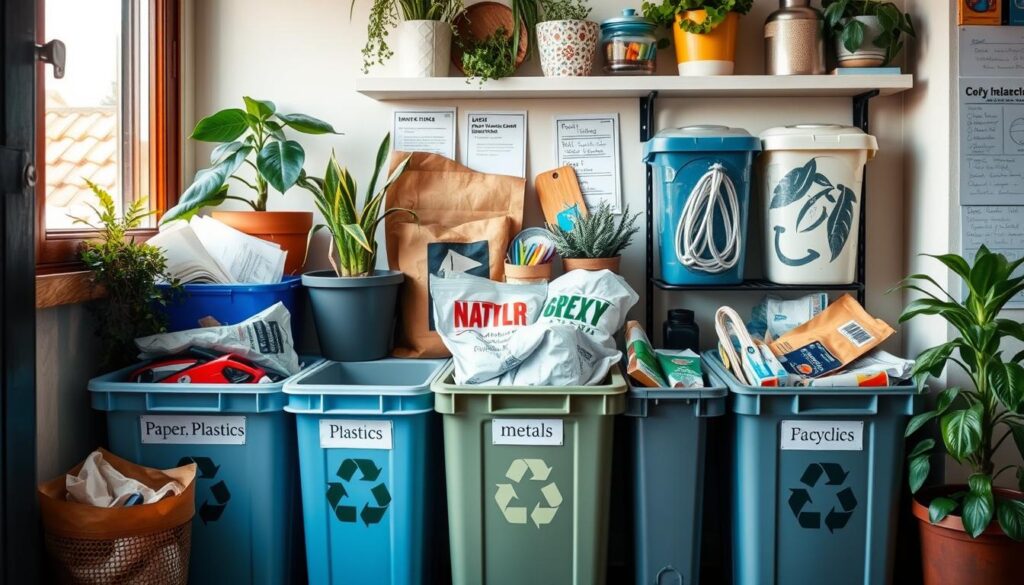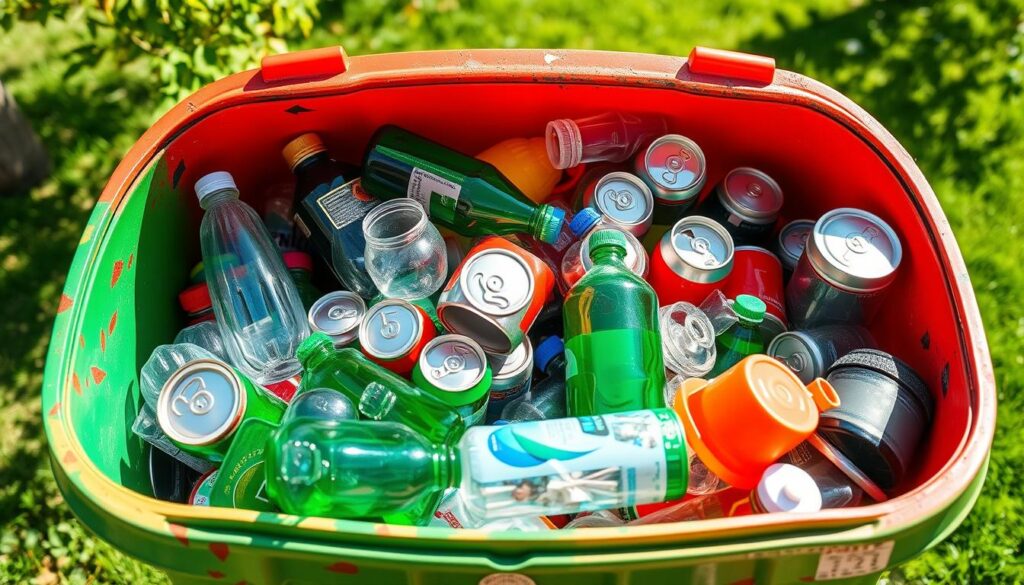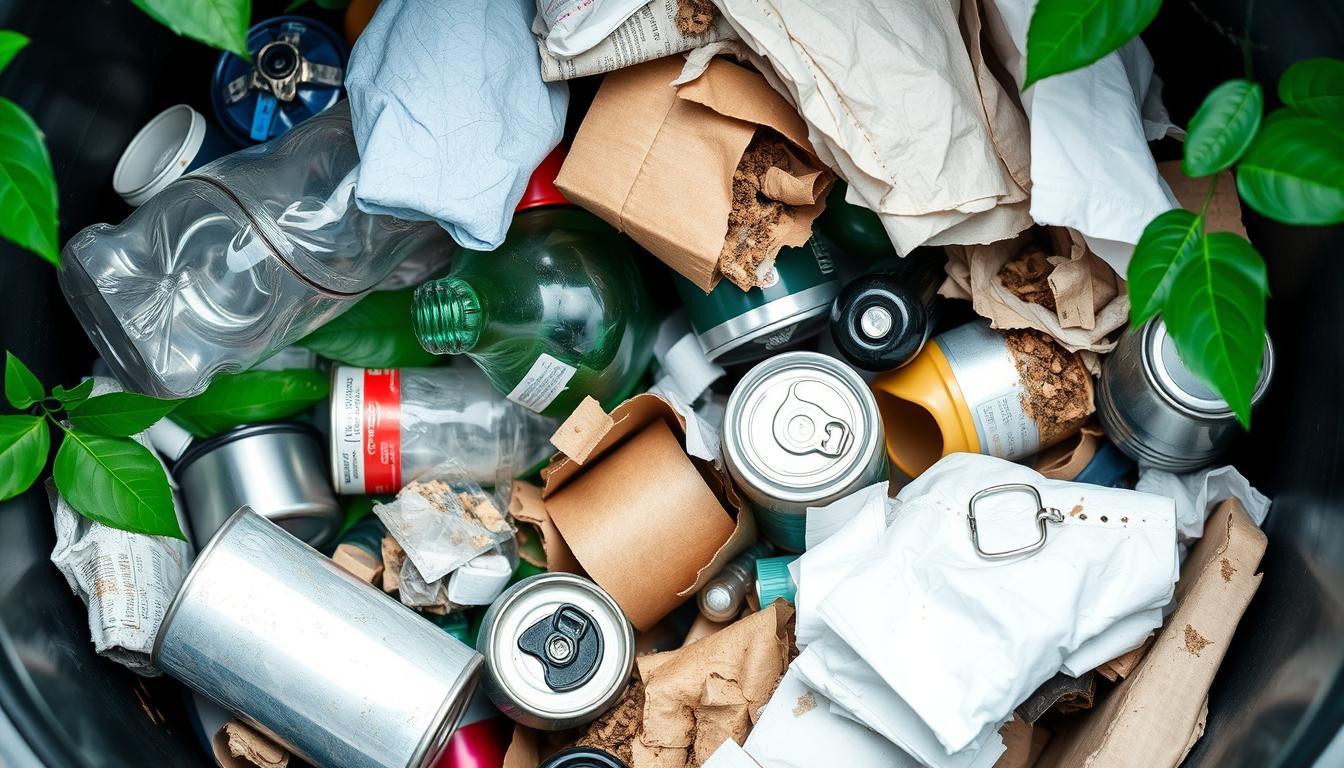Reading time: 7 Minutes
Recycling contamination prevention is a growing concern in both households and municipalities worldwide. Contamination happens when non-recyclable items end up in recycling bins—whether due to confusion, carelessness, or misinformation. This problem disrupts recycling facilities, increases costs, and reduces the quality of recyclable materials.
In this comprehensive guide, you’ll learn how to master recycling contamination prevention, improve your home recycling habits, and contribute to a more efficient and sustainable waste system. From everyday sorting tips to home setup ideas, you’ll find everything you need to avoid common mistakes and clean up your recycling routine.
Table of Contents
Key Takeaways
- Recycling contamination prevention ensures clean and high-quality recyclable materials.
- Contamination rates in the US range between 5% and 20%.
- Common culprits include food residue, plastic bags, and hazardous waste.
- Smart sorting, labeling, and home education can reduce contamination.
- Every household plays a role in improving the overall clean recycling stream.
What Is Recycling Contamination?
At its core, recycling contamination refers to the presence of non-recyclable or improperly prepared materials in recycling bins. This makes it harder—or even impossible—for recycling centers to process the waste. Effective recycling contamination prevention ensures materials can be recycled efficiently, reducing both environmental and economic costs.
Common Sources of Contamination
What to Watch Out For
TMany people unknowingly contribute to contamination. Here are the top offenders:
- Food residue left in cans, jars, and containers
- Plastic bags and film wrap
- Greasy pizza boxes and other soiled paper products
- Hazardous materials like batteries, electronics, or chemicals
- Incorrectly sorted items such as mixed-material packaging
Improper sorting directly undermines recycling contamination prevention efforts.
The True Cost of Contamination
Contamination doesn’t just harm the environment—it hits your wallet, too.
- Municipalities spend millions annually to remove contaminants.
- Whole truckloads of recyclable materials are often rejected due to one contaminated item.
- Facilities must run additional sorting operations, increasing operational costs.
- Contamination leads to worker safety risks and lower recycling revenue.
A 10% decrease in contamination can save municipalities up to $9 per household per year. That’s why recycling contamination prevention is a shared responsibility that pays off.
Shocking Recycling Contamination Statistics
| Impact of Recycling Contamination | Cost Savings |
|---|---|
| 76% of recyclables are lost at the household level due to contamination | Reducing contamination by just one percentage point can save municipalities up to 90 cents per household each year |
| Recycling contamination rates have increased from around 7% to nearly 25% in recent years | Cleaning up contamination by 10 percentage points could potentially save $9 per household |
How to Prepare Recyclables Properly
Keeping recycling efforts clean is key to sustainable waste management. It’s important to stop recycling contamination. This happens when things that can’t be recycled get mixed in. Using the right ways to sort and following recycling rules are crucial.
Basic Rules for Clean Recycling
Following recycling best practices ensures you contribute to a clean recycling stream:
- Rinse containers thoroughly to remove food or liquid.
- Remove lids and labels from bottles and jars.
- Flatten cardboard boxes to save space and prevent mechanical issues at facilities.
- Avoid plastic bags unless your area specifically accepts them.
By taking these simple steps, you actively promote recycling contamination prevention every time you use your bin.
Items That Should Never Be Recycled
Some materials may seem recyclable but actually harm the system:
- Greasy food containers (e.g., pizza boxes)
- Styrofoam products
- Plastic wrap or film
- Electronics and small appliances
- Disposable diapers
- Medical waste
- Batteries or lightbulbs
Putting these in your bin makes recycling contamination prevention significantly harder for waste management services.
Proper Material Preparation Techniques
Preparing your recyclables right can help a lot. It makes a big difference in how recycling facilities work. Remember to:
- Rinse all containers to remove any food or liquid residues
- Remove lids, caps, and labels from glass, plastic, and metal containers
- Flatten and bundle cardboard to save space in the recycling bin
By following these guidelines, you help a lot. Your actions in stopping recycling contamination are very important. They help make recycling programs work better and last longer.
How to Build a Contamination-Free Recycling System at Home
Steps to Get Started
Creating a home system that supports recycling contamination prevention doesn’t need to be complicated. Here’s how to make your efforts count:
- Use color-coded bins (e.g., blue for recyclables, green for organics).
- Label bins clearly by material type: glass, plastic, metal, paper.
- Create a recycling chart with images to guide children and guests.
- Educate your family regularly on recycling best practices.
- Introduce composting to reduce organic waste in recycling bins.
- Check your bins weekly to catch and remove contaminants.
This hands-on approach promotes cross-contamination avoidance and gets your whole household involved in recycling contamination prevention.

Recycling Potential of Common Materials
| Material | Recycling Potential |
|---|---|
| Glass | Glass jars and bottles can be recycled indefinitely without loss of quality. |
| Plastic | Plastic containers with recycling symbols 1 and 2 are widely accepted. |
| Aluminum | Aluminum cans are highly recyclable and conserve significant energy when reprocessed. |
| Paper | Paper products like newspapers, magazines, and cardboard boxes are also recyclable. |
Smart Storage Solutions for Small Spaces
Creative Ways to Maximize Space
Even if space is limited, you can support recycling contamination prevention with these clever ideas:
- Use stackable bins or slim pull-out drawers under your sink.
- Invest in multi-compartment bins to sort by material.
- Hang labeled bags or containers on walls or behind doors.
- Choose collapsible containers for easy storage and mobility.
Good storage reduces clutter, improves sorting, and ensures a clean recycling stream.
Educational Tools and Community Programs
Many people claim to recycle, but fewer understand how to do it correctly. That’s why education is key to recycling contamination prevention.
Effective Tools Include:
- Posters and infographics in schools or community centers
- Local workshops on sorting recyclables
- Digital apps that scan barcodes and offer recycling instructions
- City-funded newsletters and email reminders
Programs like the EPA’s Recycling Education and Outreach (REO) Grant and New York’s Department of Environmental Conservation lead the way with free learning tools.

Common Contamination Mistakes to Avoid
Top Errors That Ruin Recycling
- Unwashed containers – Food residue spoils the load.
- Plastic bags in bins – Wrap around machinery and cause shutdowns.
- Wishcycling – Placing items you “hope” are recyclable.
- Greasy cardboard – Compost it instead of recycling.
Being mindful of these habits will improve your results in recycling contamination prevention dramatically.
Frequently Asked Questions (FAQs)
What is recycling contamination and why is it bad?
Recycling contamination happens when trash or dirty items go into recycling bins. It increases costs and reduces recycling success.
Can greasy pizza boxes be recycled?
No. Greasy boxes contaminate paper recycling. Compost them instead.
How can I teach kids about recycling contamination prevention?
Use visuals, games, and a labeled bin system. Kids learn best through routines and repetition.
Are plastic bags recyclable in curbside programs?
Usually not. Drop them at designated store return bins instead.
Why is rinsing containers important for recycling contamination prevention?
It prevents odors, pests, and entire truckloads of recyclables from being rejected.
Conclusion: Small Habits, Big Impact
Effective recycling contamination prevention starts with awareness and action. By sorting properly, rinsing recyclables, and avoiding wishcycling, your household can play a powerful role in improving recycling efficiency.
Every clean can, every flattened box, and every properly sorted item helps. Make recycling contamination prevention a part of your daily life—and help protect our planet for generations to come.
Take Action Today
Subscribe to our Newsletter – Receive expert tips, case studies, and exclusive content on sustainable technology and green materials
Related Articles
- What Items Can Be Recycled: A Complete Guide
- Understanding Recycling Symbols: A Complete Guide to Plastic Numbers
- Recycling Symbol Numbers: Advanced Materials & Electronics – The Complete Guide
- How to Start Recycling at Home: Complete Beginner’s Guide for 2025
- 10 Common Recycling Mistakes You’re Probably Making

